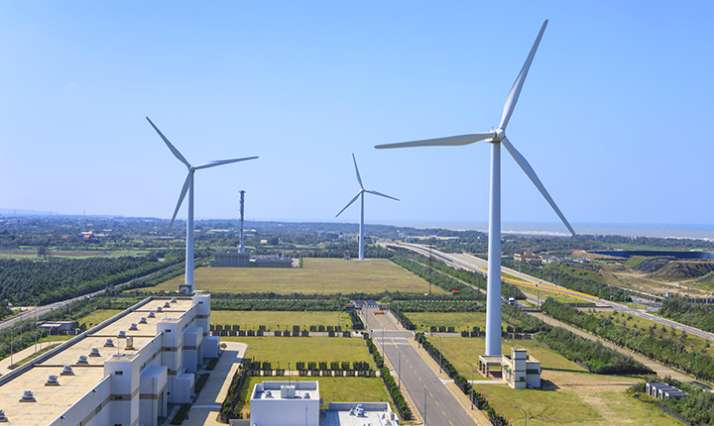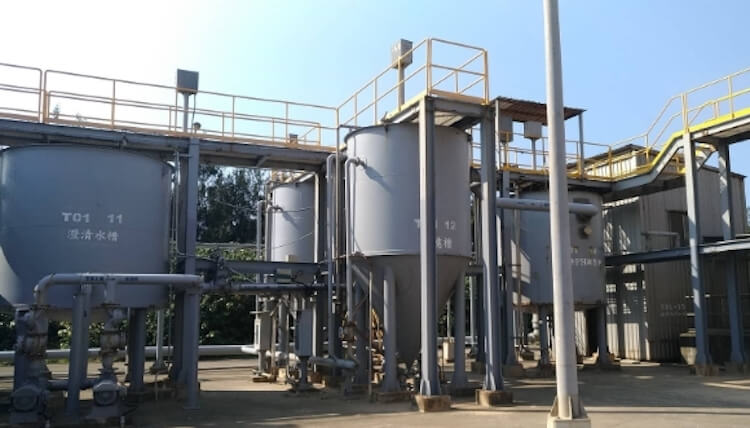Response Measures to Air Pollution
The Company has formulated air pollution management strategies for thermal power plants. These include load reductions during periods of poor air quality and sufficient power supply. Taipower also conducted a comprehensive inventory of existing control equipment, planned to set up high-efficiency air pollution control equipment, and continuously improved on air pollution improvement measures for thermal power plants in three stages: short, medium, and long-term. These measures ensure a balance is achieved between power supply and environmental protection.

Taipower's Environmental Policy - Short, Medium, and Long-Term Goals
|
Strategy |
Protect environmental qualityKey strategic dimension |
Manage air pollution emissions |
Short-term goal - by 2023 |
Medium-term goal - by 2025 |
Long-term goal - by 2030 |
|
Air pollution emission intensity will be reduced by 55% compared to 2016 |
Air pollution emission intensity will be reduced by 70% compared to 2016 levels |
Air pollution emission intensity will be reduced by 75% compared to 2016 levels |

Wastewater Recycling and Reuse
Taipower promotes rainwater harvesting and wastewater reuse at thermal power plants to reduce water consumption. Reclaimed water is primarily used for landscape irrigation, dust suppression on roads and coal piles, boiler sealing and bottom ash handling, and other processes. Each plant monitors water usage monthly and quarterly in accordance with the "Water Management Procedures for Thermal Power Plants"under the Fossil-Fuel Power Department and uses water balance diagrams to control and track resource efficiency.
Recycled and Reused Water at Thermal Power Plants
| Item | 2021 | 2022 | 2023 | 2024 |
|---|---|---|---|---|
| Rainwater Reuse | 115,476 | 61,292.7 | 50,513 | 86,802 |
| Wastewater, Process Water, and Boiler Blowdowns | 2,436,777 | 2,385,843 | 2,037,828 | 2,100,816 |
Industrial Waste Management Mechanisms
Taipower classifies, stores, transports, and reports on industrial waste in accordance with the Waste Disposal Act. Waste is tracked using a triplicate manifest system to prevent illegal disposal. For radioactive waste, short, medium, and long-term treatment and disposal plans are developed based on waste type. Taipower also monitors the "idle material rate"and "idle waste processing rate"annually to ensure management effectiveness.
Nuclear Energy-Related Waste Disposal Methods
Short-term |
Medium-term |
Long-term |
|
Storage and disposal process for low-level radioactive waste |
Before 1996:Temporarily stored at the Lanyu Low-Level Radioactive Waste Storage Site. Since 1996: Temporarily stored at low-level waste storage facilities at nuclear power plants. |
A centralized temporary storage facility is being planned, and waste will be transported to this facility for storage. |
Waste will be transported from short term or medium-term temporary storage facilities to a final disposal site. |
Storage and disposal process for used nuclear fuel |
In keeping with international norms, used nuclear fuel is stored in a dry storage facility after temporary storage in a used nuclear fuel pool. |
Utilization of Industrial Waste
Reuse of Coal Ash and Desulfurized Gypsum in 2024
| Waste | Reuse practice | Production | Reuse Volume | Reuse Ratio |
|---|---|---|---|---|
| Coal ash | Taipower has encouraged its engineering units to use fly ash in civil construction projects and for filling trenches. This raises the volume and utilization rate of fly ash and reduces the environmental burden. Coal ash is also sold for use as a building materials. | 1.805 million tons | 1.754 million tons | 97.2% |
| Desulfurized gypsum | Desulfurized gypsum is by local cement and fire-retardant board makers. | 0.261 million tons | 0.261 million tons | 100% |
Environmental Sustainability Strategy Refinement
Taipower is committed to minimizing the negative impact on the surrounding environment during operations and maximizing its positive influence on society and the environment. In addition to carrying out neighborhood activities at power plants, such as beach cleaning, fish fry releasesing, green space adoption, and building artificial reefs, Taipower continues to conduct environmental education and carefully evaluates environmental factors before power plant expansions and unit additions. Moreover, Taipower conducts in-depth communication with local stakeholders to ensure legality and compliance and to achieve win-win situations for society, the environment, and Taipower.
Taipower's Short, Medium, and Long-Term Environmental Policy Goals
Short-term goal - by 2023 |
Medium-term goal - by 2025 |
Long-term goal - by 2030 |
|
|
Strategy |
Refine management systemsKey strategic dimension |
Develop intelligent management |
Coverage of intelli- gent management and services will reach 58% (Including the cumu-lative deployment of smart meters in 2.5 million households, representing 78% of the total national power consumption) |
Coverage of intelli- gent management and services will reach 65% (including the cumu- lative deployment of smart meters in three million households, representing 81% of the total national power consumption) |
Coverage of intelli- gent management and services will reach 82% (including the completion of smart meters installa- tions in six million households after a feasibility assessment of smart meters, representing 85% of the total national power consumption) |
|
Strategy |
Create ecological inclusivenessKey strategic dimension |
Plan the fusion of faci- lities and ecologies |
Complete the release of the Hsinta Power Plant Ecological Coexistence Achievement Video and a presentation of the project results report |
Produce at least three ecologically inclusive plans for power facilities |
Produce at least five ecologically inclusive plans for power facilities |
|
Strategy |
Expand internal and external engagementKey strategic dimension |
Deliver information on electricity and the environment |
Annual communication of environmental protection information will reach 560 thousand people |
Annual communication of environmental protection information will reach 700 thousand people |
Annual communication of environmental protection information will reach 750 thousand people |


